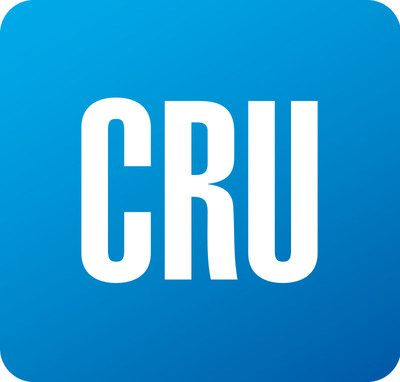Steel Products Prices North America

CRU: Rising Global Steel Prices and Trade Uncertainty Limit U.S. Imports
Written by Estelle Tran
November 3, 2020
By CRU Analyst Estelle Tran, from CRU’s Global Steel Trade Service
The U.S. market is at a unique point where steel buyers could be convinced to buy imports because of extreme supply tightness. With about 7Mt of blast furnace capacity remaining idled in the U.S. and Canada, sheet mills in operation are effectively running at 100% and are controlling order entry for January. Inventories below two months of supply at service centers, extended lead times and delivery delays have service centers searching for supply options; however, with global prices elevated as well, the prices may not be attractive.
Sheet prices continue to climb with the Nov. 18 HR coil price of $718 /s.ton up $66 /s.ton from the Oct. 21 price. One service center contact said that South Korean HR coil imports would be workable for the West Coast but less attractive in the Midwest, where the additional freight costs and travel time would make imports unworkable. Quotes to Houston for Vietnamese CR coil have been heard around $850 /s.ton landed direct discharge for April. Though the spread is attractive with domestic Midwest CR coil pricing at $926 /s.ton, FOB mill, on Nov. 18, most buyers anticipate domestic prices will be lower in the March/April timeframe.
Similar stories may unfold for rebar and wire rod. Import offers for rebar were competitive around $28 /cwt on a loaded truck basis in the U.S. Gulf, compared to U.S. domestic Midwest mill pricing of $30 /cwt, FOB mill. Months of low import levels for wire rod, steadily rising demand and domestic mill lead times into February have also pushed buyers to look abroad, even though prices have not been attractive.
Biden Trade Policy Could Diverge from Trump’s
The consensus view is that President-elect Joe Biden would probably not support further tariffs on steel on the grounds of national security under Section 232 (S232), though it is uncertain whether he will revoke the existing tariffs. CRU also anticipates that Biden will maintain an equally tough stance on China, and that the Section 301 tariffs on China will remain. The antidumping and countervailing duty investigations launched by stakeholders, which have been targeting more downstream or value-added products such as standard steel welded wire mesh that have not been covered under S232 tariffs, should proceed as usual, though there could be some changes in the way Biden and the Department of Commerce approach new trade cases.
President Trump’s forceful use of the Commerce Department has been non-traditional and it is unknown if this will continue under Biden. Under Trump, the Commerce Department set new precedents for self-initiated antidumping investigations and anti-circumvention inquiries. In November 2017, Secretary of Commerce Wilbur Ross announced the first self-initiated AD and CVD investigation for common alloy aluminum sheet from China. The Trump administration has also extended the scope of tariffs on the books to new countries via anti-circumvention inquiries on corrosion-resistant steel (CORE) and has also launched similar cases on stainless steel sheet and strip and most recently OCTG.
The Trump administration has self-initiated nine anti-circumvention inquiries. Oftentimes, the import volumes under investigation in these inquiries have been minor and the arguments controversial. In the anti-circumvention inquiry for OCTG from China, Commerce opted to investigate whether HR coil from China being exported to Brunei and the Philippines “for minor processing, and then exported to the United States as welded OCTG” circumvented duties. Imports of OCTG from Brunei were 5.6kt YTD and from the Philippines were only 510 t. These volumes are miniscule relative to the 881kt imported or licensed so far this year. The win for domestic OCTG producers would come if the government were to extend Chinese tariffs on OCTG to other countries the way it has for CR coil and CORE. Commerce has already started requiring steel license applicants to disclose where imported steel was melted and poured—a measure that will make filing new anti-circumvention inquiries easier and importing more difficult.
In early November, the U.S. Trade Representative also announced that Mexico agreed to closely monitor its exports of electrical transformer laminations and cores made from grain-oriented electrical steel made outside the U.S. Grain-oriented electrical steel was one of the key products used as justification when the administration was considering S232 tariffs on steel in 2017, and the administration initiated in May a separate S232 investigation into laminations and wound cores for incorporation into transformers, electrical transformers and transformer regulators.
Brazilian Slab Prices Increase with Demand
Brazilian mills have managed to capitalize on stronger international steel prices and demand and raised export prices $20 /t m/m to $510 /t FOB. Offers to the U.S. have been heard at $520 /t FOB, while customers in other regions have been quoted $500-510 /t. Slab demand has picked up significantly in the U.S. and Mexico and has been increasing in Europe as well. Domestic demand for slab has also increased with Usiminas’ hot end production issues pushing the mill to buy merchant slabs to re-roll.
Uncertainty about next year’s S232 slab quotas looms, as negotiations are scheduled to take place in December. As stakeholders negotiate Q1 slab business, questions remain about how the Biden presidency will impact steel trade.
Outlook: Steel Supply to Remain Tight
The tight U.S. sheet steel market will get some relief as Big River Steel’s second mill begins production and Stelco ramps up; however, the market will remain supply short without any BF restart announcements. Supply gaps from the mill down to the end-user remain a significant pricing driver and could drive some more imports for higher value products in the near term.
Beyond that, the outlook is uncertain because of the expected presidential change in January, unknowns in the trade arena and ongoing pandemic. As Covid-19 cases continue to rise, states are imposing more stringent lockdown measures. Though we do not expect lockdown measures in manufacturing as we saw in March and April, there are fears about further manufacturing and supply chain disruptions as well as broader economic issues related to the pandemic, such as shortfalls in state transportation spending.
For slabs, high prices for finished steel and slabs could encourage mills to restart idled capacity; this should cause demand for merchant slabs to start easing by the end of 2021 Q1. Further down the road, one factor that could counteract the expected easing in slab demand will be Ternium’s new hot strip mill in Mexico, expected to start up in July 2021. This should tighten the slab market as the mill has 4.4Mt/y of rolling production but no crude steel production.
Request more information about this topic.
Learn more about CRU’s services at www.crugroup.com

Estelle Tran
Read more from Estelle TranLatest in Steel Products Prices North America

Nucor slows HRC price climb with $5/ton increase
After eight weeks of double-digit price increases on hot-rolled (HR) coil, Nucor slowed the price rise this week with an increase of $5 per short ton.

Domestic CRC prices surge ahead of imports
The price spread between stateside-produced CR and imports reached its widest margin in over a year.

Evraz raises plate prices $160/ton
Evraz North America (NA) has followed Nucor and SSAB with a plate price increase of its own: up $160 per short ton (st). The increase was effective immediately for all new orders of carbon, high-strength low-alloy, and normalized and quenched-and-tempered plate products, as well as for hot-rolled coil, the steelmaker said in a letter to […]

Nucor lifts HR coil to $820/ton
Nucor has increased its consumer spot price (CSP) for hot-rolled (HR) coil for a fourth consecutive week.

Nucor pushes HR spot price to $790/ton
Nucor increased its consumer spot price (CSP) for hot-rolled (HR) coil to $790 per short ton (st) on Monday, Feb. 10 – a $15/st bump vs. last week. The Charlotte, N.C.-based company has raised its weekly CSP by $40/st over the past three weeks after maintaining tags at $750/st since Nov. 12, according to SMU’s […]
